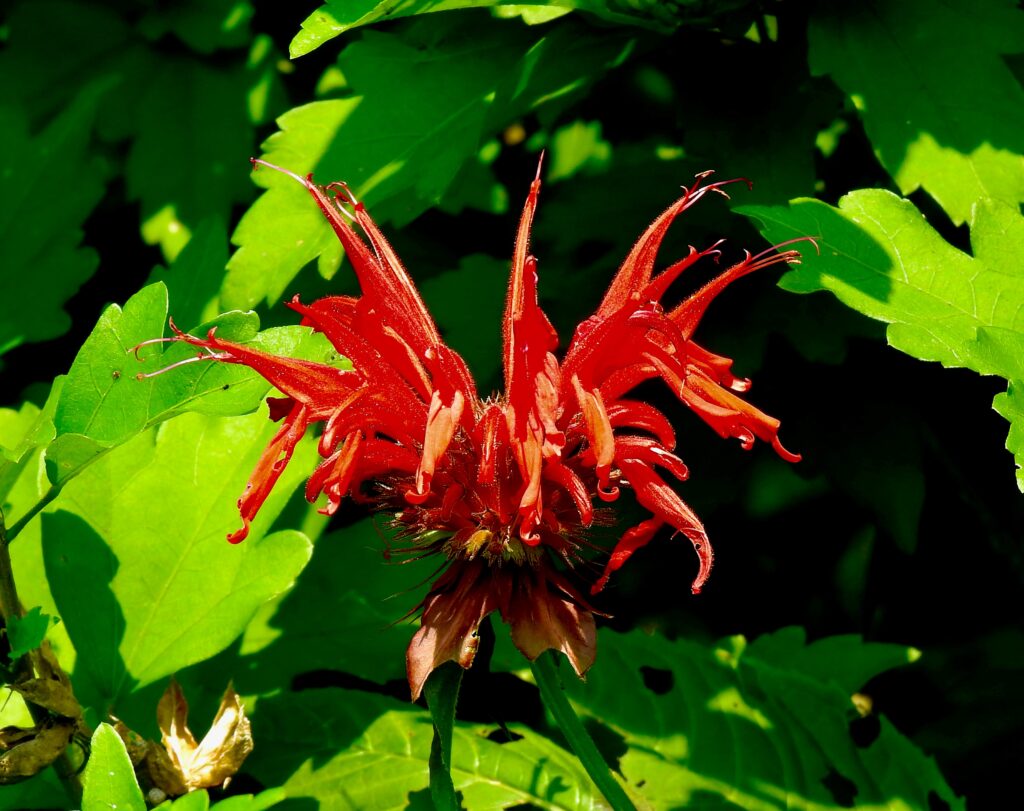By David P. Davis
Newsroom@DominionPost.com
This week, the West Virginia Botanic Garden is “on fire” with a full display of summer flowering plants and the insects that love them. WARNING: If you do not like insects, stay away! But, if you like flowers, butterflies, bees and beetles, the WVBG is the place to be.
We will start this week with a couple of my favorite flowers, beebalm and its cousin wild bergamot, both in the genus Monarda, which is a member of the mint family. Crimson beebalm, Monarda didyma, is a dramatic red, spiky flower native to our region that is also grown as an ornamental. It is a hardy perennial with square stems and opposite leaves and grows to about 4-5 feet in height. The ragged, tubular bloom is a composite of about 30 flowers. It does well in moist, sunny stream banks and ditches.

Crimson beebalm’s close cousin is wild bergamot, Monarda fistulosa, which has lavender-pink blooms. At the WVBG, both are blooming, but our wild bergamot population is much larger, as we have directly seeded them into areas during the development of wildflower beds around the Yagle Garden. The bees and butterflies love both species. And, if you can make it to the garden this week, take a moment to observe the wild bergamot to not only take in its beauty, but also the diverse population of bumblebees and butterflies frequenting the plant for nectar.
In particular, the hummingbird clearwing moth (Hemaris thysbe) population is in full force around the bergamot. These moths have a high wingbeat frequency and stout body, much like a small hummingbird. (Ruby-throated hummingbirds are also frequenting the garden.) Their bodies are yellowish-green with red and black stripes and their wings have translucent areas framed by red-tinted cells. They are fun to watch as they probe each flower for nectar.

Another favorite nectar source for bees and butterflies is the German garlic, Allium senescens var. glaucum. This allium is about a foot tall with broad, linear leaves. The bloom is an umbel of 20-30 dark pink flowers. Right now, the German garlic is in full bloom in a circular bed in the Yagle garden framing phlox, goldenrod and a prickly pear cactus. Its flowers are pulling in a huge population of European honey bees, native bees and butterflies, including skipper butterflies in the family Hesperiidae. Skippers are smaller butterflies with curved antennae and are known for their quick, darting, flying habit as they skip from flower to flower.
And, no joke, but this is just the tip of the blooming iceberg. So much is in bloom that the bees and the butterflies do not know where to turn first. Come see the swallowtails on the Brazilian verbena, the wasps on the Virginia mountain mint, the plethora of beetles and bees on the tree hydrangeas and more at the WVBG.






